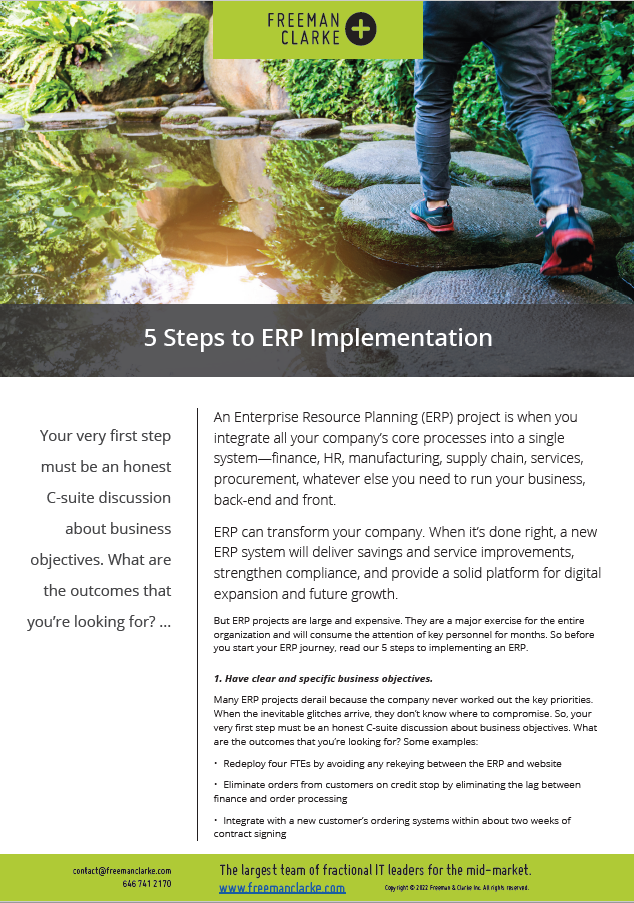5 Steps to ERP Implementation
An Enterprise Resource Planning (ERP) project is when you integrate all your company’s core processes into a single system—finance, HR, manufacturing, supply chain, services, procurement, whatever else you need to run your business, back-end and front.
ERP can transform your company. When it’s done right, a new ERP system will deliver savings and service improvements, strengthen compliance, and provide a solid platform for digital expansion and future growth.

5 Steps to ERP Implementation
ERP projects are large and expensive undertakings. They are a major exercise for the entire organization. So before you start your ERP journey, have a look at our 5 steps to implementing an ERP.
Download now for FREE!But ERP projects are large and expensive. They are a major exercise for the entire organization and will consume the attention of key personnel for months. So before you start your ERP journey, read our 5 steps to implementing an ERP.
1. Have clear and specific business objectives.
Many ERP projects derail because the company never worked out the key priorities. When the inevitable glitches arrive, they don’t know where to compromise. So, your very first step must be an honest C-suite discussion about business objectives. What
are the outcomes that you’re looking for? Some examples:
• Redeploy four FTEs by avoiding any rekeying between the ERP and website
• Eliminate orders from customers on credit stop by eliminating the lag between finance and order processing
• Integrate with a new customer’s ordering systems within about two weeks of contract signing
Of course, your own needs will differ. Just notice that the objectives above are (a) measurable and (b) can be readily assigned a monetary value.
An ERP project typically has twenty or more such key objectives, and it’s crucial that the board have consensus on each of them. Because then there will be far less room for argument when the road gets bumpy. And later you’ll be able to point back to your
requirements document and show that it was all there in black and white from the start, avoiding disputes internally and with suppliers.
2. Assign clear ownership of the project.
Too often ERP projects are run by a gaggle of people with vague roles. Instead, the CEO must absolutely appoint someone with the necessary technical know-how, business experience, people skills, and leadership qualities to run a complex project. (We would, of course, suggest one of our fractional IT leaders join your team.)
The CEO and this leader must then be clear on who is accountable for which aspects of the project. These people must have the space to do their jobs—avoid interrupting them with day-to-day issues so they can focus on the ERP project.
This can be uncomfortable for mid-market companies with ingrained ways of working. But a combination of flexibility and accountability is critical to success—plus you can see it as opportunity to develop people for the long-term.